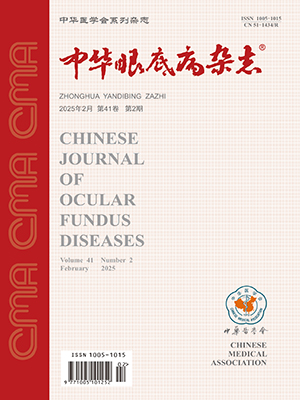| 1. |
Kondo HFoveal hypoplasia and optical coherence tomographic imaging[J]. Taiwan J Ophthalmol201884181188. DOI:10.4103/tjo.tjo_101_18.
|
| 2. |
Matsushita I, Morita H, Kondo HAutosomal dominant foveal hypoplasia without visible macular abnormalities and PAX6 mutations[J]. Jpn J Ophthalmol2020646635641. DOI:10.1007/s10384-020-00766-9.
|
| 3. |
Azuma N, Nishina S, Yanagisawa H, et alPAX6 missense mutation in isolated foveal hypoplasia[J]. Nat Genet1996132141142. DOI:10.1038/ng0696-141.
|
| 4. |
Poulter JA, Al-Araimi M, Conte I, et alRecessive mutations in SLC38A8 cause foveal hypoplasia and optic nerve misrouting without albinism[J]. Am J Hum Genet201393611431150. DOI:10.1016/j.ajhg.2013.11.002.
|
| 5. |
Iqbal MM, Makar IUnilateral isolated foveal hypoplasia[J]. Can J Ophthalmol2018533e107e109. DOI:10.1016/j.jcjo.2017.08.022.
|
| 6. |
Asakawa K, Ishikawa H. Electroretinography and pupillography in unilateral foveal hypoplasia[J]. J Pediatr Ophthalmol Strabismus, 2016, 53 Online: e26-e28. DOI:10.3928/01913913-20160509-04.
|
| 7. |
Thomas MG, Kumar A, Mohammad S, et alStructural grading of foveal hypoplasia using spectral-domain optical coherence tomography a predictor of visual acuity?[J]. Ophthalmology2011118816531660. DOI:10.1016/j.ophtha.2011.01.028.
|
| 8. |
Dubis AM, Hansen BR, Cooper RF, et alRelationship between the foveal avascular zone and foveal pit morphology[J]. Invest Ophthalmol Vis Sci201253316281636. DOI:10.1167/iovs.11-8488.
|
| 9. |
Springer AD, Hendrickson AEDevelopment of the primate area of high acuity. 1. Use of finite element analysis models to identify mechanical variables affecting pit formation[J]. Vis Neurosci20042115362. DOI: 10.1017/s0952523804041057.
|
| 10. |
Curran RE, Robb RMIsolated foveal hypoplasia[J]. Arch Ophthalmol19769414850. DOI:10.1001/archopht.1976.03910030014005.
|
| 11. |
Giocanti-Auregan A, Witmer MT, Radcliffe NM, et alIsolated foveal hypoplasia without nystagmus[J]. Int Ophthalmol2014344877880. DOI:10.1007/s10792-014-9900-5.
|
| 12. |
Harvey PS, King RA, Summers CGSpectrum of foveal development in albinism detected with optical coherence tomography[J]. J AAPOS2006103237242. DOI:10.1016/j.jaapos.2006.01.008.
|
| 13. |
Marmor MF, Choi SS, Zawadzki RJ, et alVisual insignificance of the foveal pit: reassessment of foveal hypoplasia as fovea plana[J]. Arch Ophthalmol20081267907913. DOI:10.1001/archopht.126.7.907.
|
| 14. |
付庆东, 刘彩辉, 金姬双眼黄斑中心凹发育不全1例[J]. 中国斜视与小儿眼科杂志20192734229. DOI:10.3969/J.ISSN.1005-328X.2019.03.014..Fu QD, Liu CH, Jin JA case of bilateral foveal hypoplasia[J]. Chinese Journal of Strabismus & Pediatric Ophthalmology20192734229. DOI:10.3969/J.ISSN.1005-328X.2019.03.014.
|




